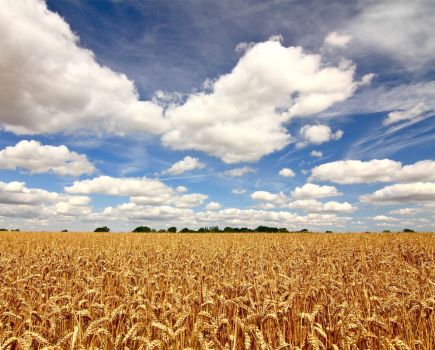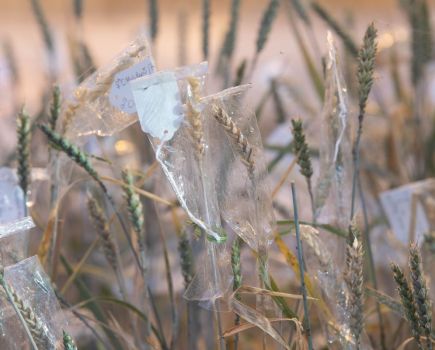With growers pinning hopes on plant breeders finding a solution to control cabbage stem flea beetle, could the answer lie in stacking characteristics which create an overall resilience to the pest? CPM investigates the latest oilseed rape R&D.
“Our approach isn’t based on an isolated trait or gene, rather characteristics which make a variety better equipped to escape the pest.” – FLORENTINA PETRESCU
By Janine Adamson
The headlines surrounding oilseed rape this season don’t make for the most positive of reading. For one, the UK is facing its smallest crop since 1983, meaning a lofty rapeseed import figure of 1.3M tonnes.
Although this notable decline in home production can’t be attributed to one single reason, a significant contributory factor is undoubtedly pest pressure during establishment, namely cabbage stem flea beetle and slugs. Simply put, in many cases, OSR has become a high risk crop.
With a rapidly depleting chemical armoury – including CSFB’s increasing resistance to pyrethroid insecticides – plus a drive towards more sustainable, cultural control methods, can the industry secure a viable future for OSR in the UK?
Niab’s break crop specialist, Colin Peters, believes the crop still has potential providing scientists can further understand the lifecycle of CSFB and therefore unlock the benefits of integrated pest management.
TRIGGER POINTS
He says it’s currently believed that the pest’s development is as follows: adults migrate to young OSR crops and feed on foliage in the early autumn; eggs are laid in the soil with larvae hatching and feeding on the plants including the main stem behind the growing point, up until spring if temperatures permit; larvae drop into the soil and pupate in late spring; a next generation of adults then hatch and feed on the crop’s stems and pods during the summer; adults aestivate in sheltered areas until the autumn when they migrate into the newly emerging crop.
“This has formed the basis of understanding for some time now, however, we still have to learn the pest’s lifecycle trigger points better, to know exactly what causes them to do what they do, behaviour-wise,” suggests Colin.
This is important in helping growers to better utilise cultural control methods, he adds. “For example, anecdotal evidence suggests spatial cropping is beneficial, and although we don’t currently know exactly how far adults can fly to migrate, it’s generally accepted that 2km is a sufficient buffer. “In essence, it’s better to grow OSR as far away from its previous location in the rotation as possible, as well as avoiding proximity to neighbouring farms’ crops to mitigate risk.”
Despite questioning the currently assumed lifecycle for CSFB, Colin accepts there’s a general pest peak in mid-September. “Therefore, there should be an opportunity to control using shallow cultivations – around 50mm – as research has shown this can reduce adult populations significantly [see March issue of CPM, page 30].
“We can also utilise methods which hide the emerging crop from the adults, such as a taller stubble from the previous cereal crop, or, considering options such as cover and companion cropping,” he advises.”
While conventional, home-saved seed may still suit some, could new hybrid genetics help give the crop a better chance of survival?
Delivering genetic traits which help to boost the success rate of OSR is something that Limagrain has long been focusing on, says the firm’s arable technical manager, Ron Granger. “Our breeding programme has been centred around the continuous improvement of yield and disease resistance by offering fully-loaded varieties, bringing in TuYV, PoSH, SClero-Flex, N-Flex and more.”
He acknowledges that contributing to the establishment issues experienced by growers is climate change – dry soils at the desired time of sowing and subsequent lack of rainfall. This has placed greater emphasis on the firm’s OSR breeding station at Rothwell in Lincolnshire, to evaluate how potential new varieties react in UK conditions, he says.
“However, we recognise that one of the most significant challenges that UK OSR growers currently face is CSFB and therefore, our breeding efforts are now concentrated on finding a potential solution.
“We’ve spent thousands of hours phenotyping in the field, seeking out the ideotype to de-risk the threat of CSFB. The pest has been a problem in the UK for more than a decade, but we’re now starting to see the results of our concentrated breeding efforts.”
LG CSFB RESILIENCE
The culmination of this work is presented as LG CSFB Resilience – a novel genetic approach that tackles the pest at key crop stages, for use as part of an integrated pest management strategy, highlights OSR product manager, Florentina Petrescu.
“Despite external factors such as climate change and pest pressure, we want to continue the drive towards consistency in OSR,” she says.
So what’s the science behind the LG CSFB Resilience approach? According to Florentina, work has been based on understanding how to best arm OSR with the ability to overcome two pest pinch points – adult feeding in the autumn and larval feeding in the spring.
“We want OSR plants which can utilise an escape mechanism where autumn growth limits adult attacks and stem elongation in the spring reduces larvae damage. Plus with less larvae in the plants altogether, we can reduce the overall severity of CSFB and achieve a greater yield potential,” she explains.
Starting with the adults, because the beetles feed on cotyledons and first leaves with symptoms exhibited as shot-holing, the impact is significant leaf area loss and in some cases, total crop destruction. However, this can be mitigated by identifying varieties which demonstrate dynamic autumn growth, says Florentina.
“This is the key to escaping those early CSFB attacks during the establishment phase. To quantify this vigour, varieties are assessed at three stages: BBCH 11-14, 14-17 and 17-20,” she explains.
Then, to combat the larvae damage, work focuses on evaluating varieties based on their growth behaviour in the spring during stem elongation stage. “In a contrast to the adults, larvae damage the petioles which are the stalks that attach the leaves to the stem of the OSR plant. As well as presenting access points for fungal pathogens such as phoma, this feeding also results in bushy, heterogeneous plants,” highlights Florentina.
“As such, larvae damage can have a direct correlation with yield loss – research conducted in France suggests this can be up to -1300kg/ ha, based on an average yield.”
Interestingly, says Florentina, while undertaking this R&D explorative work it became apparent there could be a way to limit the number of larvae which develop in OSR stems full stop – an additional characteristic to the autumn vigour and spring stem elongation detailed above.
“Using Berlese test methodology [also known as the Berlese funnel extraction method] to detect insect presence, we’ve been able to assess the number of CSFB larvae in the stems of infected plants.
“What we’ve noted is there appears to be the capacity to limit larvae populations using genetic differences, although exactly how this works is still being investigated,” she comments.
As a collective, these characteristics are what Limagrain believes will help OSR to overcome CSFB and reclaim its position as the most profitable break crop. “One attribute simply isn’t enough, they have to all be stacked together in one variety.
“However, our approach isn’t based on an isolated trait or gene, rather a series of characteristics which make a variety better equipped to escape the pest,” stresses Florentina.
This benefit can’t be at the expense of the genetic traits growers have become accustomed to either, she adds. “A variety must continue to offer good disease resistance traits, rounded agronomic benefits and strong yield potential otherwise it could be perceived as a backward step.”
With this assessment work taking place behind the scenes during 2022- 24, Limagrain has already started to identify suitable varieties within its portfolio which offer LG CSFB Resilience, one of which is LG Avenger.
“Avenger is the result of our new methods for breeding OSR varieties which take into consideration all limiting factors for the crop’s development, including CSFB. Although the only variety with LG CSFB Resilience on the 2025/26 AHDB Recommended List, it’s just the start, with new material being developed as we speak.”
For UK growers, Avenger is commercially available in readiness for planting later this year and offers a host of benefits, says Ron. “It’s high yielding particularly in the North [106] with an [8] for stem stiffness, [8.0] for lodging resistance, has pod shatter resistance, a LLS score of 7 and offers high oil content of 46%.
“With exceptional autumn and spring vigour, it’s just the latest in a long line of developments that have helped to improve yields in LG’s ‘fully loaded varieties’, he adds.
CSFB is a major pest in many other European countries including France, where CSFB resilience has been a characteristic on the French Recommended List since 2020. Independent data from the French equivalent of AHDB (Terres Inovia) places Avenger as one of the highest rated varieties for CSFB resilience (7.2) compared with a susceptible control (4.5).
This backs up three years of Limagrain Europe assessments in 2022-2024, where Avenger significantly outperformed the sensitive control variety and came close to the most resilient control, LG Aviron, points out Florentina.
“Interestingly, the sensitive control did show good spring stem elongation, but the severity of CSFB symptoms ended up being quite high, illustrating that one characteristic isn’t sufficient on its own; everything has to come together,” she says.
Despite offering a highly appealing package, Florentina concludes that it won’t be enough to purely rely on varieties such as Avenger to make OSR a UK success again. “There has to be an integrated management approach throughout an entire cropping rotation.
“Varieties will never be a magic solution to a problem – they’re a tool which when combined with best practice for crop establishment and appropriate chemical use, can now contribute towards CSFB control.”
This article was taken from the latest issue of CPM. Read the article in full here.
For more articles like this, subscribe here.
Sign up for Crop Production Magazine’s FREE e-newsletter here.




